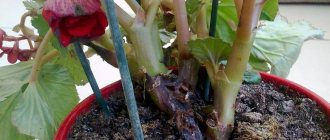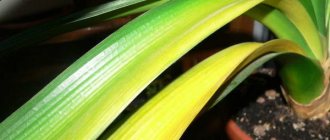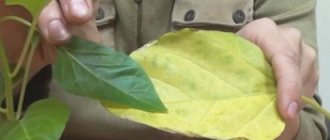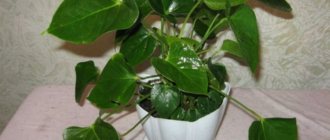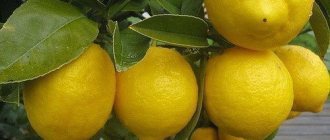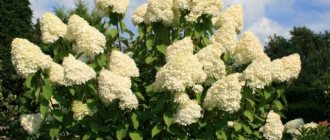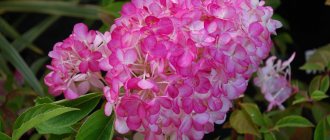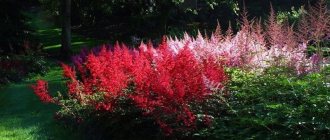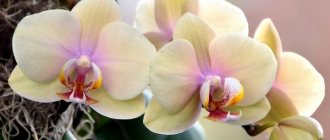When and how should hydrangea bloom?
Garden shrubs are often used in landscape design, which is why many gardeners try to achieve continuous flowering. The right variety will help decorate your garden with flowers.
With proper care, hydrangea blooms lushly
Flowering of early species begins in the first half of summer and lasts until September. In temperate climates, the crop can develop until frost. However, there are some exceptions:
- Varieties Pinky Winky, Hydrangea macrophylla Hornly bloom from August to September.
- Phantom blooms from June to October.
- Flowering of Messalina and Green Racer crops continues in June-July.
On average, hydrangea blooms from July to October. If you think about the location of the bushes in the flowerbed in advance and combine different varieties, you can achieve bright flowering throughout the season.
Hydrangea can also be planted in a pot. Low-growing crops are usually grown indoors.
Important! The flowering of a plant depends not only on the species, but also on the acidity parameters. It is necessary to systematically move the flower into fresh soil.
Tea leaves or coffee grounds are used as homemade oxidizing agents. You can also use citric acid.
It is worth considering that flowering of purchased seedlings begins later. Such plants need adaptation to growing in open ground.
Hydrangea varieties
Tree hydrangea
Garden hydrangea: planting and care in open ground
Most representatives of the culture are shrubs. Although the tree-like small variety and vines are also popular. They are characterized by large and small leaves, paniculate or corymbose type of inflorescences. In any case, the inflorescences are located at the tops of the shoots.
Tree hydrangea
Representatives of the species are bushes growing up to 150 cm in height. Usually the species is large-leaved, the length of individual leaflets can reach 20 cm. The leaf blade is slightly lowered down, has a heart-shaped notch and jagged edges. The upper part of the leaf is green, and the bottom is bluish.
The following varieties are considered to be the most demanding representatives of the species:
- White House is a bush whose height varies from 1 to 1.5 m. It has large shield-shaped inflorescences;
- Invincibelle Spirit - maximum height - 1.2 m. Large inflorescences consist of sterile flowers. Initially, the color of the buds is bright pink, then it can fade to light pink;
- Incrediball - distinguished by large and lush spherical inflorescences, white;
- Hayes Starburst are low bushes with thin shoots. Often branches break under the weight of large flower buds. The flowers are double, their diameter in some cases reaches 25 cm;
- Annabelle - has white, sterile inflorescences, up to 20 cm in diameter.
paniculate species
The main difference between paniculate hydrangeas and tree hydrangeas is the inflorescences. The buds consist of a combination of large sterile and small fertile flowers that can grow up to 25 cm in length. During the flowering process, the buds can change color more than once. The foliage of this type of crop is large and may have an ovoid or elliptical shape. Flowering usually occurs during the transition period from June to July.
Popular representatives of the species:
- Vanilla Fraise - can grow up to 2 m in height. The inflorescences are strawberry-pink in color;
- Phantom - the bushes are distinguished by spreading crowns, growing at least 2.5 m. The first inflorescences appear in cream shades, then they begin to turn pink;
- Pinky-Winky - maximum height - 1.8 m. The inflorescences are an openwork purple-pink bud;
- Limelight - at the beginning of flowering, the buds are greenish in color, which at the end radically change color to pink.
paniculate species
Why garden hydrangea does not bloom, but only leaves grow
Why garden or indoor jasmine does not bloom and what to do
Hydrangea is grown for its delicate and attractive flowers. Therefore, their absence can upset and puzzle any gardener. The question of why hydrangea does not bloom, but only produces foliage, is not so simple. There may be several reasons for this problem.
Frozen buds
The plant can withstand frost normally only if there is sufficient snow. If there is little snow in the winter, the bush needs to be covered. Otherwise, the buds of the plant will freeze and the bush will not be able to bloom. The procedure should be carried out at the end of September, without waiting for severe frosts.
The reason for the lack of flowers may be freezing of the buds
To do this, the hydrangea branches need to be bent to the ground and secured with special devices. It is not recommended to force shoots that are too strong to the surface of the soil, as they may break. It is best to place a brick under the branch. You can also use another support.
After fixing the hydrangea, it can be covered. To do this, it is recommended to use greenhouse film or agrofibre. Any insulating material should be folded in 2 layers. Ordinary film for insulating hydrangeas will not work, since it does not provide sufficient ventilation. The top of the insulation should be sprinkled with peat. The thickness of this layer should be 15 cm.
Important! You can remove the shelter only after the frost is over. This will help protect the buds from freezing and achieve abundant flowering.
Irrigation irregularities
The culture is considered very moisture-loving. It requires watering before flowering and after dropping its leaves. In summer, the soil needs to be moistened at least twice a week.
It is recommended to use rainwater for irrigation. If this is not possible, you can take ordinary water and let it sit for at least 5 days. Hydrangea requires water without lime impurities. For 1 bush you should take up to 2 buckets of liquid.
Wrong landing site
In order for the flower to grow and develop normally, you need to choose the right place for planting. In order for hydrangea to delight with beautiful inflorescences, it is necessary to plant it in slight partial shade. The bush will also benefit from diffused sunlight. If there is a lack of lighting, the crop will not bloom and may even die.
Hydrangea should be grown in a sunny place
In this case, the specific need for lighting depends on the type of hydrangea. Not all varieties can tolerate direct sunlight. At the same time, there are varieties that need full illumination. However, such crops require more frequent and good watering.
Important! Hydrangea needs sufficient soil moisture. Therefore, it is not recommended to plant moisture-loving crops near bushes. They will absorb most of the liquid.
Excess or deficiency of nutrients
Poor flowering may be caused by improper fertilization. With an excess of nitrogen, the green mass of the bush can actively grow. To make hydrangea bloom magnificently, it needs to be fed with preparations containing potassium and phosphorus.
It is worth considering that the flower needs nitrogen. However, it is recommended to add products containing this element before the juices begin to flow. The second feeding is carried out during the summer. During this period, it is necessary to feed the flower with potassium and phosphorus.
To make it easier for hydrangea to withstand a drop in temperature, a third feeding is carried out in the fall. To do this, you should give the bush phosphorus preparations. Such remedies help achieve kidney formation.
In order for hydrangea to bloom magnificently, it needs to be fertilized in a timely manner.
Improper pruning of shrubs
It is strictly forbidden to cut off all shoots of the crop, since buds are considered the key to beautiful flowering. Their formation begins in the autumn season. It is important that the buds can survive the winter, and in the spring they can awaken and release inflorescences.
Important! One of the most common mistakes when growing hydrangeas is incorrect autumn pruning. It is recommended to remove only damaged or diseased branches.
It is also worth considering that the buds, which are subsequently responsible for the appearance of flowers on the bushes, appear on the tops of the shoots. Therefore, shortening them is not recommended. Otherwise, the hydrangea will not bloom.
Damage by diseases or pests
The culture practically does not suffer from pathologies. Lack of smell does not attract bees. Parasites almost never affect bushes. Most often, hydrangea undergoes the development of chlorosis. At the same time, the leaves lose their rich color, becoming paler. They become stained and quickly crumble. Flowers become small or completely absent.
Lack of flowering is often due to the development of diseases
To cope with the problem, it is worth treating the bushes with a solution of iron sulfate. In this case, it is necessary to spray even those fragments on which there are no symptoms of the disease yet. To get rid of fungi, you should use copper sulfate or Bordeaux mixture.
Of the harmful insects, hydrangea can suffer from aphids, slugs and spider mites. At the same time, strong bushes are usually not attacked by insects. Most often the problem occurs in young petiole bushes. Crops that are weakened by the disease may also be affected.
Important! Excessive pruning can lead to a decrease in the bush's immunity. If there is a need to remove a large number of stems, the procedure should be carried out in several stages.
Planting an already blooming hydrangea seedling
The flower has difficulty accepting transplantation. The adaptation period can last throughout the season. In such a situation, the existing inflorescences will fall off, and the next ones will not form.
Flowering failure is associated with the following factors:
- excess or deficiency of fertilizer at the crop planting stage;
- moving a flower from acidic soil to alkaline or slightly acidic;
- replanting a flower with a lump of soil.
In order for a plant to fully grow and develop well, it needs to be provided with an ideal microclimate. It is important to prepare a hole for planting in advance and create shade.
Weak root system
Young plants need a certain amount of time to develop a strong root system. Therefore, it is important to be patient when growing the plant. To speed up the formation of roots, bushes need to provide optimal conditions.
Important! In order for the plant to gain strength, it must be properly fed in the fall.
In this case, it is necessary to use fertilizers to strengthen the roots and prepare for winter.
Recommendations
In order for any type of ornamental shrubs to delight you with abundant annual flowering, you should listen to the advice of experienced gardeners and choose varieties suitable for the climate of a particular region.
Very often, gardeners complain that blue hydrangea does not bloom in the garden even if all agrotechnical practices are followed. In the northern regions, flower buds may not have time to form; as a result, the next year the bush has gorgeous foliage and a complete absence of flowers.
When using hydrangeas as a hedge, it is recommended to space the plants 1 meter apart. This allows ornamental shrubs to have their own space, not oppress each other and grow actively.
Important! If the hydrangea does not bloom for the third year, it may have been rejuvenated by pruning it to a stump.
Planting in regions with a cool climate is carried out in early spring so that the seedlings take root and the shoots ripen before winter. In more southern regions, it is permissible to carry out the procedure in early autumn.
Reasons for the lack of flowering in some varieties of hydrangea
Why does hippeastrum not bloom - only leaves grow?
There are quite a few types and varieties of hydrangeas. They differ in appearance and have certain features in care.
Paniculata
This variety of hydrangea is resistant to low temperatures. In the absence of severe frosts, the bushes do not need to be covered for the winter. If paniculate hydrangea does not bloom, what to do in this situation? First of all, you need to establish the provoking factor.
For panicle hydrangea to bloom, it needs the right soil.
Problems with plant flowering may be due to improper soil composition. All types of hydrangeas do not grow well in sandy soil. When growing crops in clay soil, there is a risk of moisture accumulation, which leads to its stagnation. In such a situation, you need to use a drainage layer.
Important! The best option for paniculate hydrangea is loamy, acidic soil. If there is a shortage of fertilizers, it is recommended to use additional fertilizing.
large-leaved
The absence of flowers on large-leaved hydrangea varieties is due to freezing of the buds. In this case, it is necessary to insulate the bushes for the winter. Broad-leaved varieties need to be pruned systematically. However, this must be done as carefully as possible.
In this case, you need to cut the branches of large-leaf varieties at a slight angle. It is forbidden to remove shoots that form on the shoots of the previous year - it is on them that buds appear.
Tree-like
This group of flowers is characterized by poor resistance to frost. She needs careful shelter. Sometimes the inflorescences lose their color. This indicates insufficient nutrition of the crop.
It is recommended to apply fertilizer when the first green leaves appear. This must be done throughout the season. The absence of flowers on tree hydrangea may be due to lack of moisture.
Pink
Pink varieties of hydrangea are very popular among gardeners. They are tree-like or paniculate.
Pink varieties bloom profusely with good care.
The lack of inflorescences can be due to various factors - it all depends on the type of shrub. If the flowers of a crop acquire a blue or white color, this indicates a change in the acidity of the soil.
Tips from gardeners for caring for hydrangeas
Hydrangea has long and firmly won people's love. Some collectors plant several types and varieties of crops on their plots at once. Experienced gardeners are always ready to share their secrets of growing hydrangeas with beginners:
- If you have only one specimen of hydrangea on your site, and you would like to see a group planting, you can propagate the plant with cuttings taken from the root shoot. Cuttings easily root in a mixture of peat and river sand at a temperature of 20-22° C and a humidity of 80%. In a month and a half, the rooted cuttings can be planted in a pot; they will be planted in a permanent place next spring. An even easier method of propagation is dividing the hydrangea bush.
- When choosing a seedling in a store, take into account the climatic features of your area. Any varieties are suitable for the southern regions; residents of the middle zone and northern regions will have to choose frost-resistant varieties.
- During planting, the bushes are placed at intervals of at least 1 meter, because in the future each of them will need space.
- During the period when inflorescences appear, you should not feed the hydrangea with organic fertilizers, otherwise this will cause rapid growth of foliage to the detriment of flowering.
- The succulent leaves of hydrangeas are often attacked by slugs. Pests gnaw holes in the leaf blades and leave behind silvery marks. You can get rid of shellfish by sprinkling the ground under the bush with eggshells. The smell of beer will help attract slugs; the drink is poured near the plant, and then the collected pests are collected and destroyed.
- If you had to replant the hydrangea to another place, keep the earthen ball on the roots of the plant as much as possible. In this case, the transplant will be less traumatic.
- The color of large-leaved hydrangea inflorescences may change depending on the acidity level of the soil. At a pH below 5.5, the flowers turn blue; in a slightly acidic environment (pH 6.5), the buds turn pink. You can adjust the color by adding aluminum sulfate to the soil (the flowers will turn blue) or lime (the hydrangea will turn pink).
Why indoor hydrangea does not bloom
Why do hydrangea leaves dry around the edges - what to do and how to revive the flowers
Indoor types of hydrangea are unpretentious. At the same time, they bloom quite brightly and luxuriantly. The absence of flowers may be due to the following factors:
- Change of location - after purchase, the flower is subject to changes in temperature, humidity, lighting, which causes stress and shedding of buds.
- Neglect of replanting - purchased seedlings are usually not grown in adequate soil with the required amount of nutrients.
- Staying in the same pot for more than 2 years - as the roots grow, there is a violation of the absorption of water and useful elements.
- Excess nitrogen - it is recommended to feed the flower with special compounds for hydrangeas.
Important! Indoor varieties of hydrangeas do not like exposure to direct sunlight and low light levels. The bush can be placed on the windowsill and slightly shaded with a curtain.
Indoor hydrangea cannot be moved from place to place.
Diseases and pests
A very common reason why hydrangea blooms poorly is disease. Sometimes even established buds begin to fall off if the plant becomes sick. The most common cause is fungi: powdery mildew, leaf spot or gray mold. A plant infected with fungal pathogens does not develop, growth and flowering slow down. You need to react immediately by spraying the plant with fungicides.
Often the cause of weakened flowering is pests, especially aphids. The feeding of aphids on the leaves is immediately visible; if flowers appear, they are small and often distorted. Tiny aphids can cause a lot of damage. It is better to pre-spray the bush for prevention.
How to make a shrub bloom
In order for the plant to develop normally and bloom luxuriantly, when caring for it, you need to take into account several important features.
Proper preparation for winter
In autumn, the plant needs to be properly prepared for winter. If it was not possible to wait for flowering during the growing season, the hydrangea should be insulated. To do this, the bed needs to be loosened and covered with a mulch layer.
For crops that are frost-resistant, it is worth making special shelters from branches. In Siberia and the Urals, bushes need to be covered with waterproof material.
Timely pruning
It is recommended to prune hydrangeas in spring and autumn. This must be done with a sharp tool. Before carrying out the procedure, the pruning shears should be disinfected.
For full flowering of the crop, timely pruning is necessary.
Selection of suitable fertilizers and fertilizers
Hydrangea needs to be fertilized throughout the growing season. Nutrients can be made independently or purchased ready-made. In early spring it is worth adding mixtures that have a prolonged effect.
Change in soil acidity
The crop can hardly tolerate changes in soil acidity. In this case, the color of the inflorescence may change, flowering is disrupted, and the bushes weaken. Experienced gardeners use special instruments that help measure soil acidity parameters.
Fertilizers to activate flowering
Feeding helps stimulate the onset of budding.
Optimal diet:
- in the spring, at the beginning of the growing season, with the active growth of green foliage, nitrogen-containing fertilizers are applied - urea and potassium sulfate (1 tablespoon per 10 liters of water), the consumption rate of the working solution is 5 liters per bush, watering with slurry, diluted in in a ratio of 1:10;
- at the end of the spring season, when inflorescences are laid, the crop is fertilized with potassium-phosphorus complexes, for example, superphosphate (1 tablespoon per 10 liters of water);
- in summer, active flowering is supported by fertilizing with fertilizers developed for flowering plants, while simultaneously acidifying the soil with an aqueous solution with whey (1:3) or citric acid (5g/10 l) in the place where the bush grows, application frequency - 2-3 times per season;
- in the fall, in order to strengthen the shoots in preparation for winter, feed with potassium sulfate and superphosphate (1 tbsp/10 l of water)

